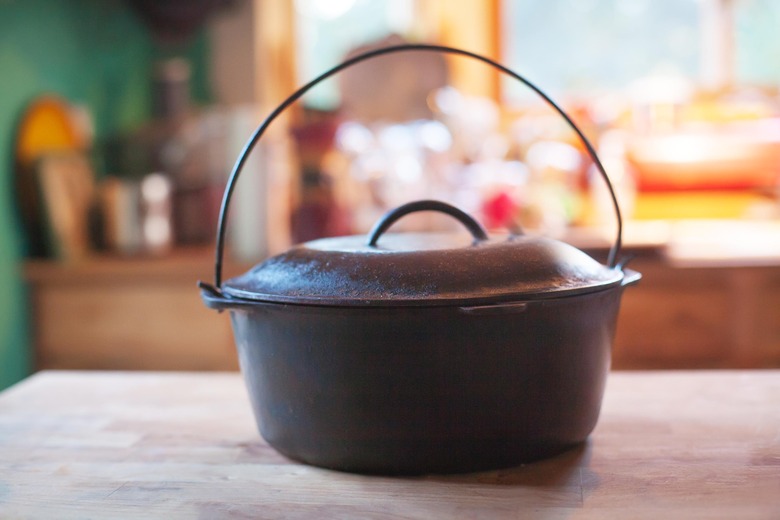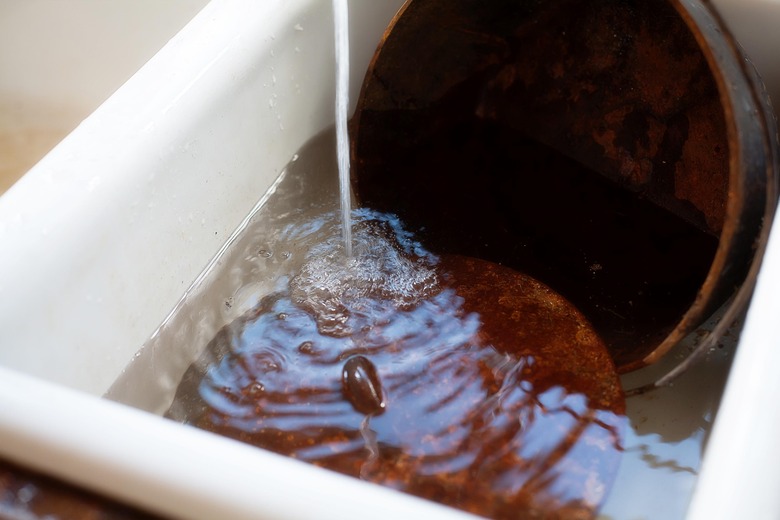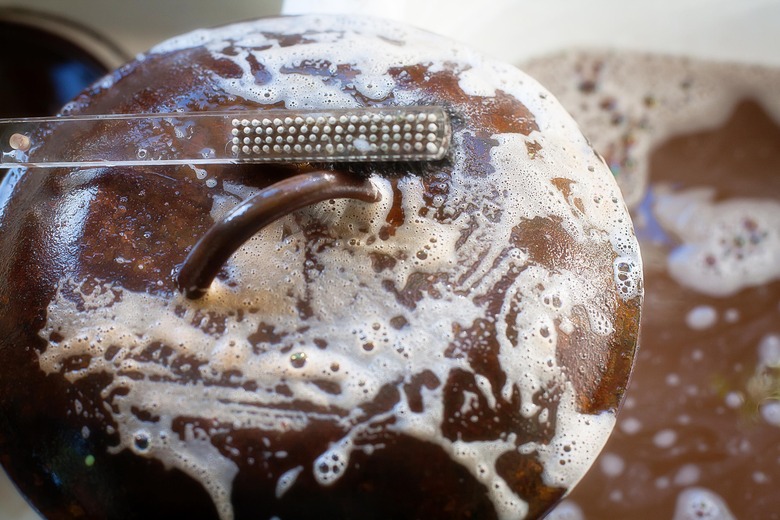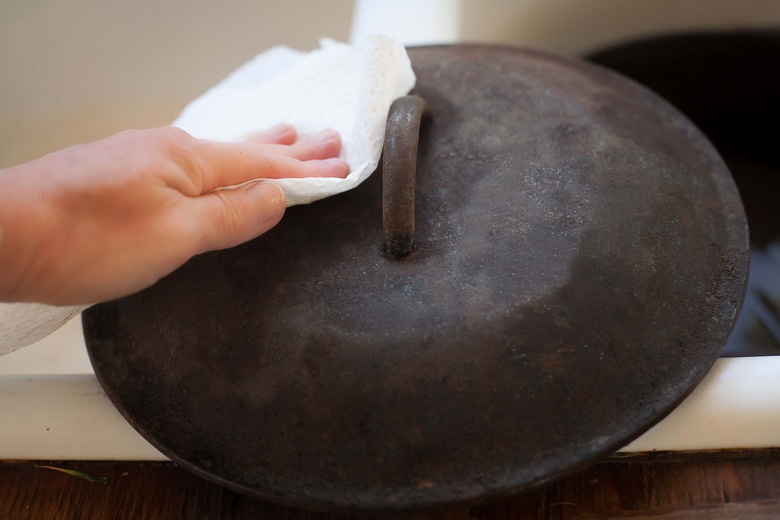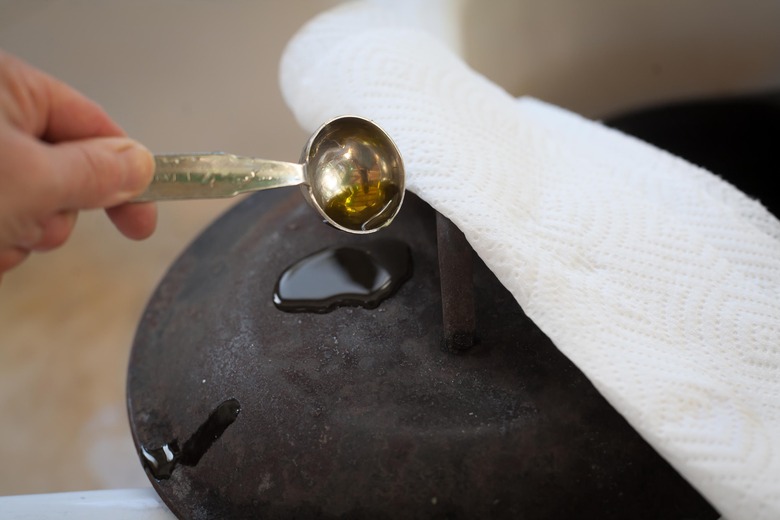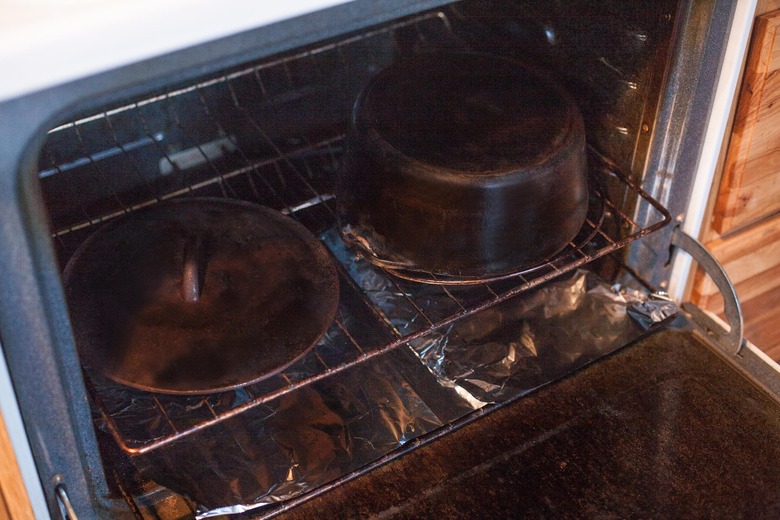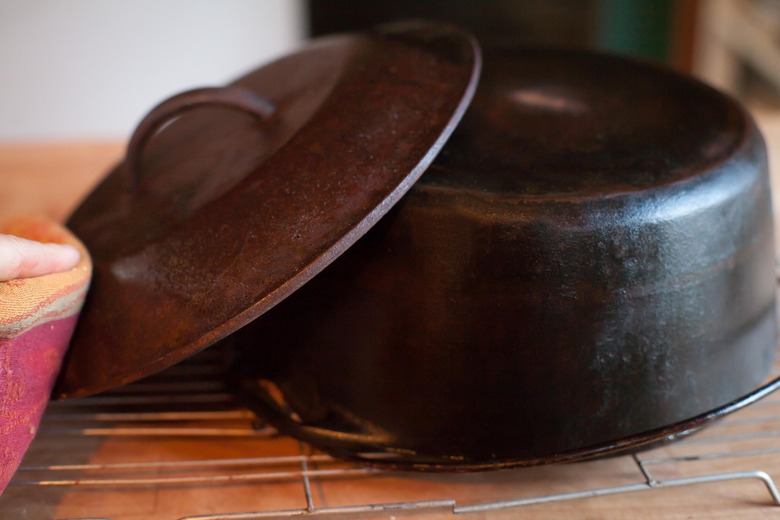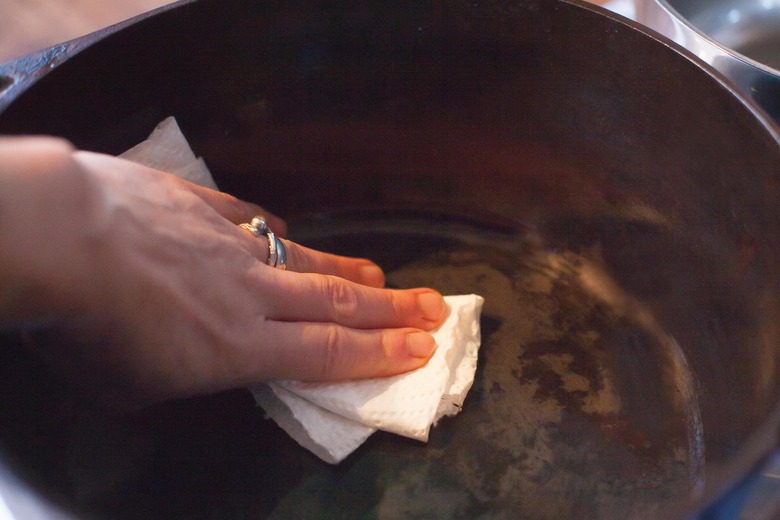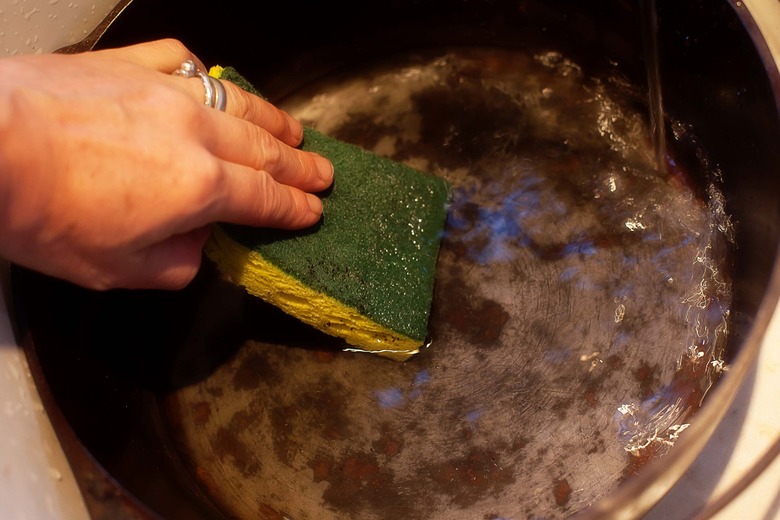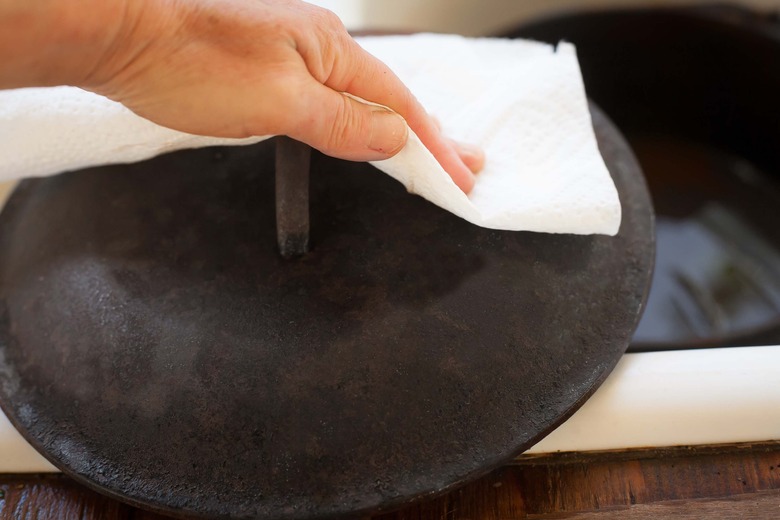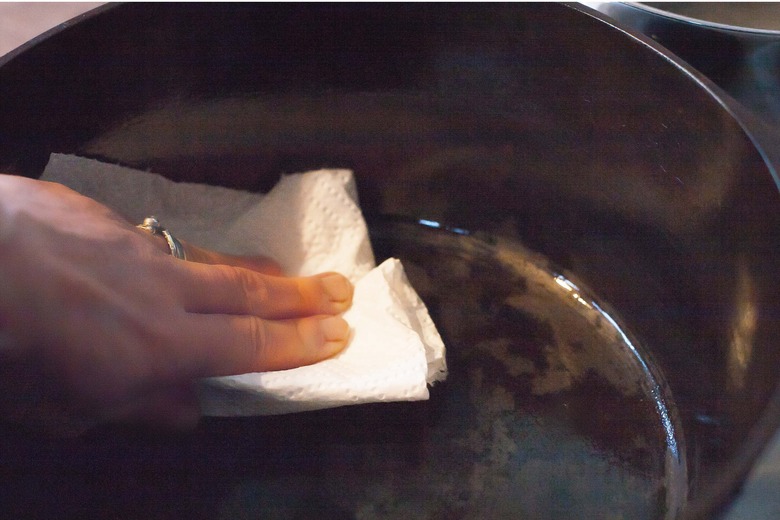How To Clean A Rusty Cast Iron Dutch Oven
Things Needed
-
White distilled vinegar
-
Nylon or plastic stiff-bristle brush
-
Dish detergent
-
Lint-free towels
-
Vegetable shortening
-
Aluminum foil
-
Heat-proof gloves or pads
-
220-grit sandpaper (optional)
Few things capture the idea of rustic form and function as effortlessly as a cast iron Dutch oven. It allows you to cook a mouth-watering casserole to perfection, and lends a country air to your kitchen decor when displayed on an open shelf. But when you frequently wash it with soap and water or leave it to air-dry, it develops unsightly rust that makes it unusable for cooking. A combination of removing the rust and re-seasoning easily resolves the issue. If you use your Dutch oven as a display-only piece rather than an integral part of cooking, a single seasoning round in the oven is enough after cleaning.
Easy Rust Removal
Step 1
Block your sink drain and fill it with equal parts white distilled vinegar and warm water. Submerge the cast iron Dutch oven and lid. Let it soak for two to four hours; anything longer increases the chance that the vinegar will eat away at the finish.
Step 2
Drain the sink. Scrub the rust off with a nylon or plastic stiff-bristle brush. Do not use steel wool. Rinse the pot and lid, and then wash it with dish detergent and a clean stiff brush. This is the only time you should use soap on cast iron.
Step 3
Dry the oven and lid thoroughly with a lint-free kitchen towel.
Classic Seasoning Technique
Step 1
Add a tablespoon of vegetable shortening or oil in the bottom of the pan. Buff the oil into the metal evenly with a paper towel or lint-free cloth, inside and out. Repeat this process with the lid. Do not use too much shortening. The idea is to create a very thin, even layer of oil on the Dutch oven.
Step 2
Rearrange the racks in your oven, placing one in the middle and one at the bottom. Cover the bottom rack with aluminum foil. This prevents oil drippings from collecting on the bottom of the oven or damaging the heating element.
Step 3
Preheat the oven to 350-degrees Fahrenheit. Place the Dutch oven upside down and the lid right-side up on the middle rack, so that the interior of the pot faces down and the lid handle faces up.
Step 4
Keep the oven door closed for one hour. Remove the Dutch oven carefully. Set it on a heat-resistant surface to cool.
Step 5
Repeat this process every day for three to four days, adding oil to only the inside of the cast iron pot and the underside of the lid. A single coat on the exterior during the initial seasoning is enough in most cases.
Cast Iron Maintenance
Step 1
Rinse your Dutch oven after each use. Use a plastic or nylon brush to remove any remnants leftover from cooking. Soap or detergent aren't necessary and render your painstaking seasoning process useless.
Step 2
Dry the Dutch oven immediately after rinsing. Be sure to dry around the handles and along any crevices. Any amount of moisture can cause the metal to rust.
Step 3
Season the Dutch oven lightly every few months. After rinsing and drying, heat the pan on low for five to 10 minutes. Remove it from the heat and buff a small amount of oil into the metal, just enough to create a near indiscernible sheen. Let the pan cool completely before storing.
Tip
If the surface of the cast iron turns a light shade of rust right after you soak and clean it, sand the rust away with 220-grit sandpaper. Rinse and dry it before seasoning.
